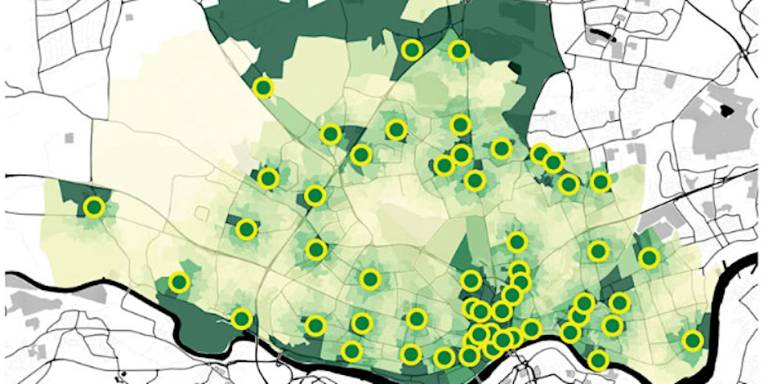Spatial Inequality and the Smart City with Prof. Rachel Franklin
25 January 2024, 6:00 pm–9:00 pm

Join us for our third Public Lecture of the 2023-24 series which will offer a conceptual overview of the dilemma related to sensor location and spatial inequality, illustrated through a case study example from Newcastle upon Tyne.
This event is free.
Event Information
Open to
- All
Availability
- Yes
Cost
- Free
Organiser
-
Prof. Nick Gallent
Much attention is given to fairness and equity in the smart city, whether algorithmic bias, surveillance, or socio-economic inclusion. This talk directs attention to an explicitly spatial component of the smart city apparatus: sensor networks, their placement, and the emergence of coverage gaps—or sensor deserts. How are cities and other stakeholders to make decisions about placement and where does coverage of vulnerable groups and places fit in?
In this talk, Prof. Rachel Franklin will provide a conceptual overview of the sensor location-spatial inequality dilemma, give a case study example from Newcastle upon Tyne, introduce a potential solution, and conclude with some thoughts for both researchers and those on the ground working with smart city sensor networks, including local governments, policymakers, and community groups.
The lecture will be followed by a drinks reception.
About the Speaker
Prof. Rachel Franklin
Rachel Franklin is Professor of Geographical Analysis in the Centre for Urban and Regional Development Studies (CURDS) at Newcastle University and Group Leader for Liveability in the Science of Cities and Regions Programme at the Alan Turing Institute. Her research interests are in the sources and impacts of demographic change as it occurs at multiple spatial scales, and in novel forms of data and analysis to identify, characterise, and address these changes. She works at the regional and local scales to understand how societal and technological innovations (e.g., smart city technologies) can be implemented equitably and justly; how best to characterise or measure the populations and features of places; how location and scale are related to spatial inequalities and demographic change; and how migration, especially internal, affects demographic composition. She is especially interested in how we use data and statistics to understand what sorts of people are located where, how this changes over time, and what this means for our understanding of spatial inequality.
 Close
Close

